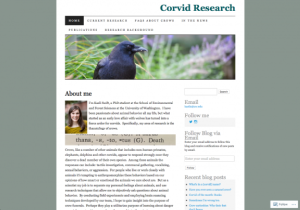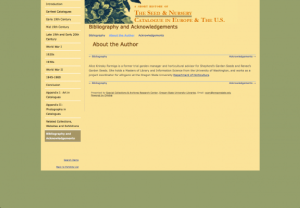Research and Education
Back to Top
|
 |
|
The Modernist Journals Project
|
Language Arts |
|
In early twentieth-century Europe and North America, journals and magazines played an important role in both literary and political life. Brown University and the University of Tulsa have teamed up to digitize many of these influential journals, including the short-lived Vorticist literary magazine BLAST, the NAACP's The Crisis, the muckraking McClure's Magazine, and Robert Graves's edited poetry magazine, The Owl. Visitors are invited to browse these publications by issue (the collection includes 26 journals as of this write-up) or conduct a text-search. In addition, the Modernist Journals Project offers a number of accompanying resources for literature and history scholars, teachers, and enthusiasts. In the MJP Lab, visitors can explore a variety of graphs, tables, and visualizations relating to specific journal entries. Another feature of this website is an extensive biographical database, which provides short snippets about various journal contributors. Those interested in situating this rich source collection may want to check out the Books and Essays sections for works about these journals, including historical and contemporary articles. Finally, educators can explore classroom assignments that utilize this collection in the Teaching with the MJP section. [MMB] |
|





|
|
 |
|
Global Biodiversity Information Facility
|
Science |
|
Originally featured in the March 3, 2001 edition of The Scout Report, the Global Biodiversity Information Facility (GBIF) continues to allow "anyone, anywhere to access data about all types of life on Earth, shared across national boundaries via the Internet." Created in 1999 on the recommendation of an Organization for Economic Cooperation and Development panel, GBIF functions as a one-stop shop for data from a number of institutions around the world. In the Data section, researchers can access information in a number of ways, including by Country, Dataset, and Species. As of this write up, GBIF includes over 30,000 data sets and data from over 200 countries. While researchers may be most interested in the Data section, members of the general public and science teachers may be most interested in the News section. Here, visitors will find Featured Data Use, which highlights recently published studies that draw on GBIF data. [MMB] |
|





|
|
 |
|
National Numeracy Network: Teaching Resources
|
Mathematics |
|
Numeracy refers to the ability to use and interpret numerical data in one's life and work. The National Numeracy Network (NNN) is an organization headed by a rotating team of mathematics, science, and social science scholars and educators from across the United States and based out of the Science Education Resource Center at Carleton College. The NNN aims to promote "education that integrates quantitative skills across all disciplines and at all levels." On the Teaching Resources page, college-level instructors will find a variety of resources to aide numeracy instruction. These resources, developed by college professors across the country, include materials for mathematics and statistics classrooms, as well as materials for integrating numeracy into other subjects. In Pedagogical Approaches, visitors can explore seven different models for incorporating numeracy into instruction (including Teaching with Data and Teaching Quantitative Reasoning with the News). Meanwhile, in the Resources section, instructors will find a variety of classroom activities, curriculum, and assessments. [MMB] |
|





|
|
 |
|
Monroe Work Today
|
Social studies |
|
Born in 1866 in North Carolina, Monroe Nathan Work established the Department of Records at Tuskegee University in 1908. Here, inspired by the pioneering journalism of Ida B. Wells, he collected and preserved information about the horrors of lynching. This website, created by Auut Studios, provides information about lynchings and the heroic activists who worked to publicize and stop lynching. The centerpiece of this powerful website is its Map of White Supremacy Mob Violence, an interactive map and timeline feature that allows visitors to observe the prevalence of lynching across time and region and learn more about each act of violence. As this map illustrates, lynchings, while especially common in the deep south, occurred in all areas of the United States, targeting black communities, Native American communities, Latin@ communities, Chinese communities, and Italian communities, among others. This map is accompanied by a thorough Ask Questions section, which explains how the data was compiled, notes the limitations of the map, and encourages viewers to ask critical questions. These two resources would make a strong addition to any American history classroom. [MMB] |
|





|
|
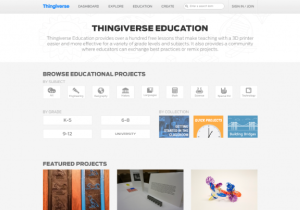 |
|
Thingiverse: Education
|
Educational Technology |
|
Thingiverse, created by the three-dimensional printing company MakerBot, is an online community for "discovering, making, and sharing 3D printable things." For K-12 and university level instructors with access to 3D printing technology, this website also provides a large collection of free lesson plans for incorporating 3D printing into the classroom. These lessons can be browsed by grade level and subject (including Science, Math, and Engineering, as well as Art and History), or by compliance to national standards (including the Common Core and Next Generation Science Standards). Each lesson includes detailed instructions, and many also include accompanying videos to aide in incorporating these resources into the classroom. These engaging, hands-on projects would also make great additions to out-of-school educational settings, including libraries and enrichment programs. [MMB] |
|





|
|
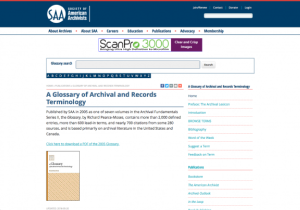 |
|
A Glossary of Archival and Records Terminology
|
Vocational Education |
|
Anyone who has ever conducted archival research knows that the field includes a variety of specific vocabulary terms, including words relating to material preservation, copyright law, and more. Fortunately, the Society of American Archivists (SAA) has created this free, extensive glossary of archival and records terminology. On this website, visitors can browse hundreds of terms alphabetically or conduct a text search for unfamiliar terms. The glossary, over 400 pages in total, is also available as a free PDF download. The guide includes a helpful Preface, authored by archivist Robert Pearce-Morris, that outlines how archival vocabulary has shifted over time. In addition, those interested in learning new archival terms one week at a time can sign up for a free Word of the Week email. [MMB] |
|





|
|
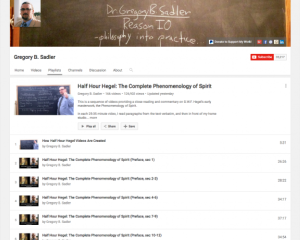 |
|
 |
|
American Association of Community Colleges: DataPoints
|
Vocational Education |
|
The American Association of Community Colleges (AACC) has created DataPoints, a collection of printable snapshots that highlight data that may be of interest to higher education professionals, from student service staff to instructors to administrators. These DataPoints cover a range of topics, including degree completion rates, enrollment trends, student attitudes, and projected demographics of high school graduates over the next fifteen years. For instance, one recently published snapshot reveals how well students felt their experience in higher education prepared them for the workforce. Another Data Point provides data about student completion rates for remedial coursework. In another, visitors can see that, between 1979 and 2013, the percentage of tuition at public two-year institutions covered by a Pell Grant has plummeted from 99% to 53%. Easy to read and attractively presented, these DataPoints provide a useful resource for meetings, presentations, grant applications, and more. [MMB] |
|





|
|











